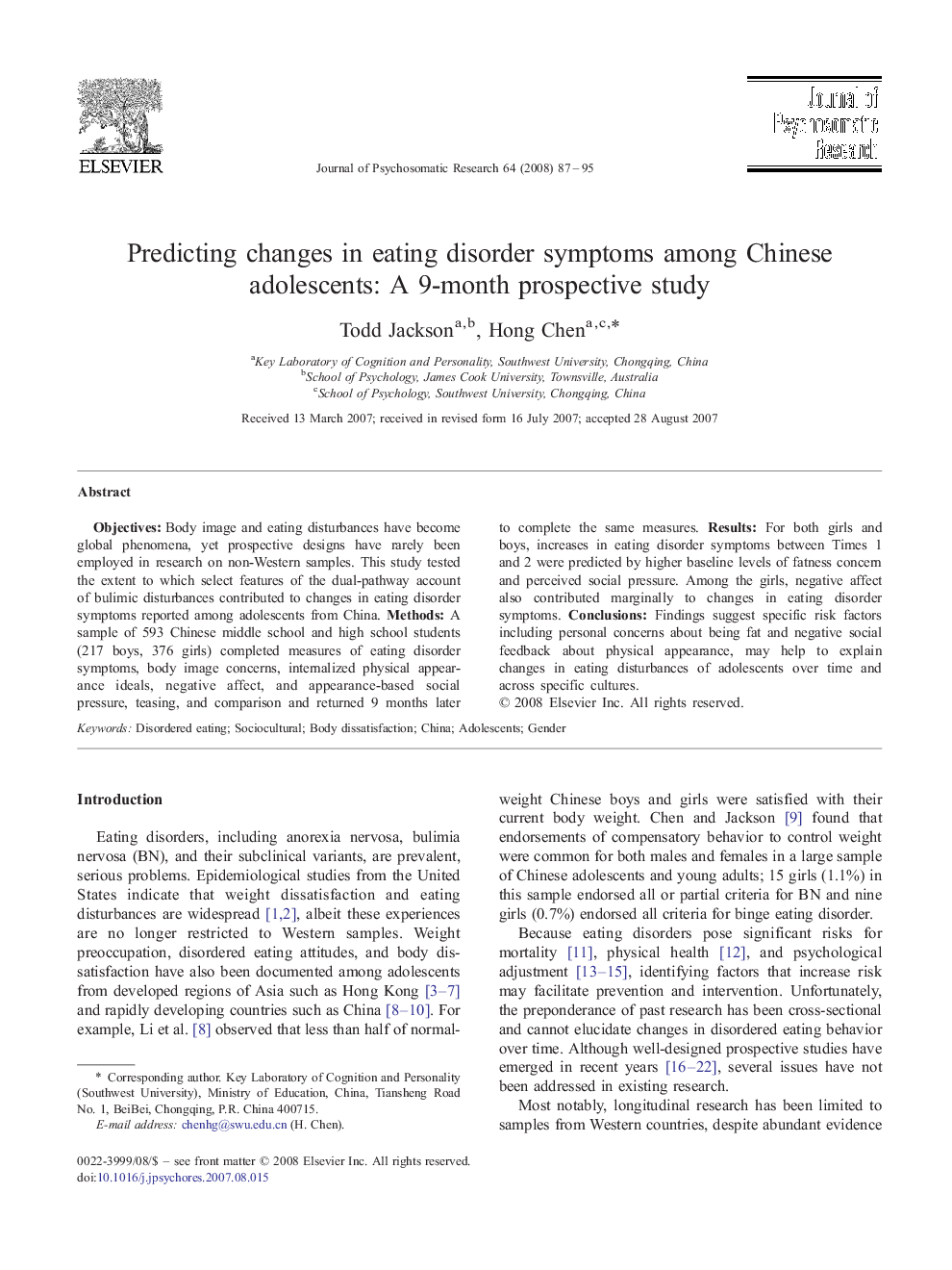| کد مقاله | کد نشریه | سال انتشار | مقاله انگلیسی | نسخه تمام متن |
|---|---|---|---|---|
| 951126 | 926861 | 2008 | 9 صفحه PDF | دانلود رایگان |

ObjectivesBody image and eating disturbances have become global phenomena, yet prospective designs have rarely been employed in research on non-Western samples. This study tested the extent to which select features of the dual-pathway account of bulimic disturbances contributed to changes in eating disorder symptoms reported among adolescents from China.MethodsA sample of 593 Chinese middle school and high school students (217 boys, 376 girls) completed measures of eating disorder symptoms, body image concerns, internalized physical appearance ideals, negative affect, and appearance-based social pressure, teasing, and comparison and returned 9 months later to complete the same measures.ResultsFor both girls and boys, increases in eating disorder symptoms between Times 1 and 2 were predicted by higher baseline levels of fatness concern and perceived social pressure. Among the girls, negative affect also contributed marginally to changes in eating disorder symptoms.ConclusionsFindings suggest specific risk factors including personal concerns about being fat and negative social feedback about physical appearance, may help to explain changes in eating disturbances of adolescents over time and across specific cultures.
Journal: Journal of Psychosomatic Research - Volume 64, Issue 1, January 2008, Pages 87–95